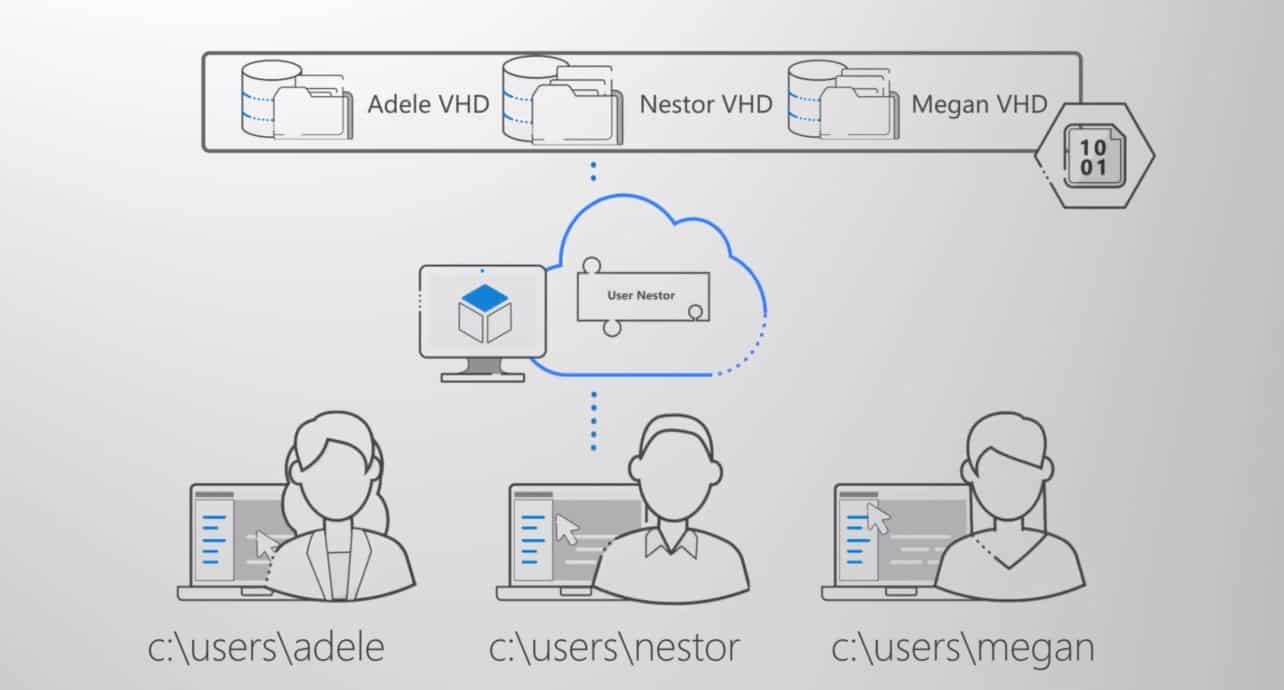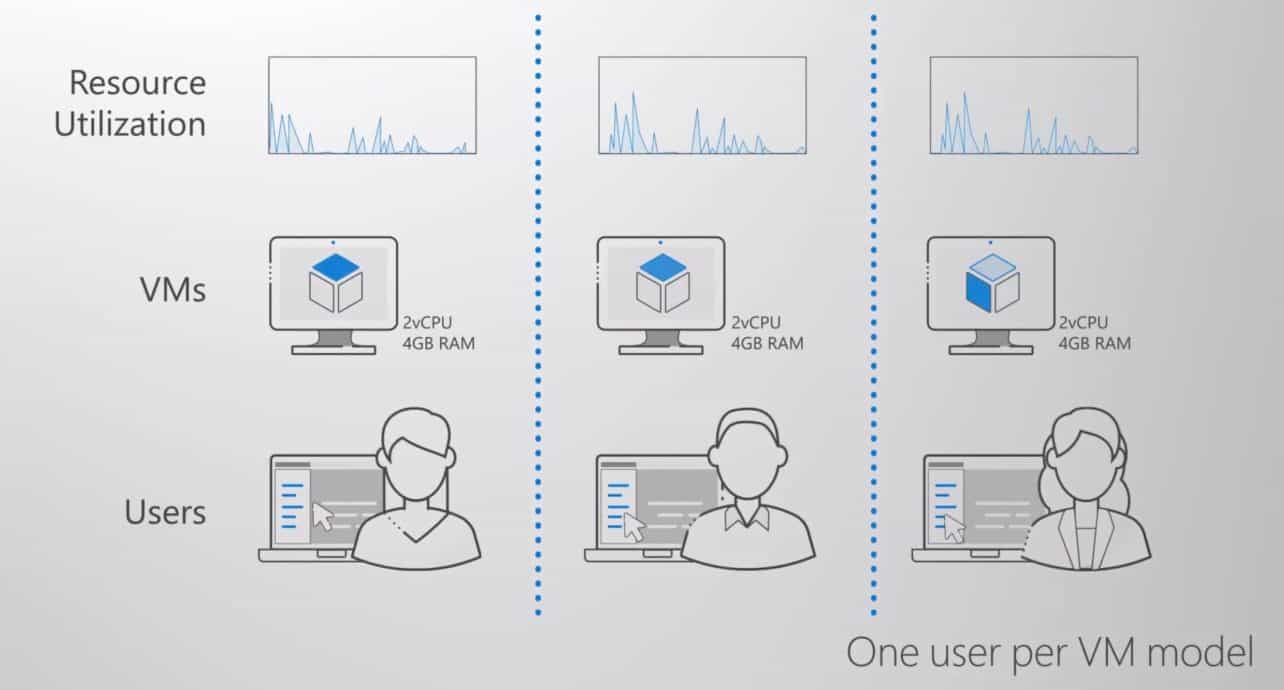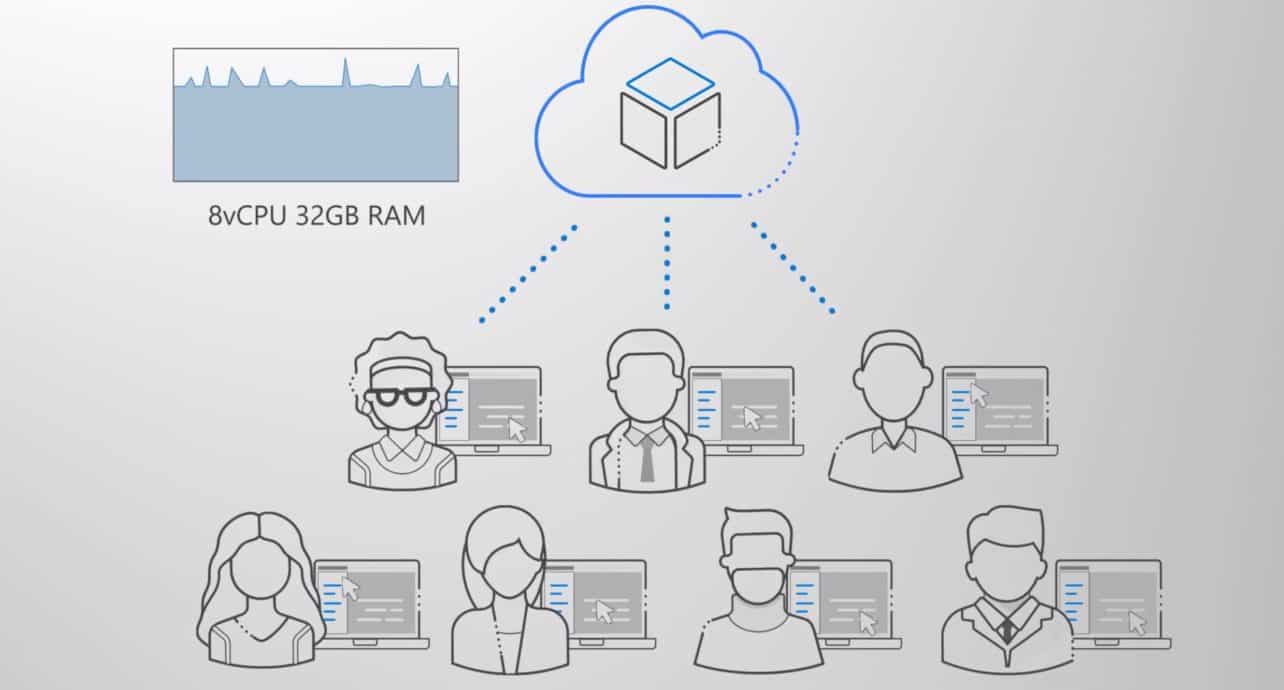The tech giant from Redmond has decided to get involved in the desktop virtualization market. A market that nowadays mainly consists of virtualizing Windows 10. Microsoft wants to make virtual desktops more accessible for all companies.
The idea behind virtualizing a desktop is that the company’s data is stored more securely. It is more secure because the company’s data is stored centrally in the data center, and the virtual desktop can be configured in such a way that the data can only be stored there. It is also possible to achieve a higher level of security with virtual desktops. The data is often stored on a fileserver separated from the virtual desktop. After each use of the virtual desktop, the environment will be destroyed. If a user logs in again, a new virtual desktop is created from a golden image.

For these reasons, virtual desktops are very popular in specific industries. The government often works virtually, but so do insurance companies, banks, and the legal and healthcare industry. These are also industries that generally have deeper pockets. That is also because offering virtual desktops to a large number of users was always quite expensive. It is certainly not an affordable solution for every company.
There are several reasons for this; you need a lot of hardware, there are license fees for Windows servers, for Windows desktops and there are also third-party software solutions that simplify management, but which also have costs. In addition, there are also costs for maintenance, installing patches, troubleshooting, setting permissions, installing new applications, etc.
We spoke with Pieter Wigleven, Senior Product Manager at Microsoft Windows Virtual Desktop, about the development of this new product.
Microsoft reduces costs and automates the management of virtual desktops
With Windows Virtual Desktop, Microsoft tries to make desktop virtualization more attractive and accessible for much more companies. For example, the use of WVD has been included in Microsoft 365 Business Premium subscriptions and up. Subscriptions that are popular under medium-sized companies and above. They often have E3 or E5 subscriptions.

Furthermore, Microsoft has developed a special Windows 10 version that is only available through WVD. This version makes it possible to run multiple Windows 10 sessions on a single virtual machine (VM), which drastically reduces costs. You usually have to run each Windows 10 session on an individual VM.

Simplified management of Windows 10 virtual desktops
To apply desktop virtualization in your business, you used to take care of quite a few things. You have to have a Windows server environment and multiple servers on which the virtual machines could be virtualized. It required the necessary configuration of your (Azure) Active Directory, Intune, the desired applications and of course infrastructure for the desktops. With WVD, Microsoft has also greatly simplified this. You can create an Azure account in addition to your Microsoft 365 subscription and link it to each other. Within Azure, you can then use WVD at the attractive (Linux) rate. You can choose from all available virtual machines that Azure has to offer, from very light configurations to very heavy configurations. Azure, of course, does the management of that infrastructure.
As an administrator, you can configure a Windows 10 installation and provide it with the necessary applications and then use it as a host image (golden image) for all VMs that are created. Every user has access to a desktop with the same applications.
However, it will also be possible to use a standard Windows 10 image that automatically gets patched by Microsoft every month. You can add all the applications to the VMs via MSIX app attach. MSIX app attach mounts an external hard disk on which the application is installed to the operating system. The application is entirely separated from the operating system, but can run within the operating system when mounted. The big advantage is that you no longer have to do the maintenance of the operating system yourself. In addition, instead of virtualizing an entire desktop, you can also just virtualize a separate application. MSIX app attach will be available later this year.
Microsoft has also recently added an administrator portal as part of the Azure Portal, making it easier to manage VMs. This used to be done via PowerShell.
Microsoft wants to simplify it even more
Microsoft continues to strive to simplify WVD even more, according to Wigleven. For example, a better integration with a local Windows 10 installation has recently been made. You can now also have application icons in your local Windows 10 start menu that refer to an application in the Azure Cloud. You won’t notice anything else, except that the application might take a fraction longer to load. These icons do have an additional icon indicating they are run externally.
Furthermore, the goal is to reduce the role of the domain controller. When starting a VM, you now have to join a domain, and that requires additionals actions and requires infrastructure with associated costs. This is something that is less interesting for smaller companies. Microsoft is looking into whether this can be simplified.
Applications need to be adapted for virtual desktops
As Microsoft makes desktop virtualization more widely available, it is also being used a lot more. This also means that the demand for some applications is increasing and not everything works directly out-of-the-box on a virtual desktop. Sometimes you have to deal with peripherals or audio/visual hardware that cannot be controlled properly from a virtual app. Take, for example, Microsoft Teams, WebEx or Zoom, which have a feature to do video calls. On a virtual desktop, the application will search for the local camera, microphone and speakers, that is not going to work, because there are none. So these applications need to support virtual desktops, where they can connect to the hardware of the logged in user through a virtual gateway. The WVD team, together with the team behind Microsoft Teams, have developed a special version of Microsoft Teams for WVD, which is now available.
Citrix and VMware already offer more complete solutions
Companies such as Citrix and VMware are a Microsoft partner for the WVD offering. They now also deliver their Workspace solutions including their management tools in combination with WVD. As a result, the VMs run in the Azure Cloud, but as a company, you can use the features that Citrix and VMware offer in their Workspace products. This is very interesting for companies that are looking for a complete unified workspace solution.
For integrators, there is a whole new world
Companies such as Microsoft, Citrix and VMware focus mainly on the very large enterprises, but everything below that is filled in by their channel partners and integrators. With the introduction of WVD, a whole new world has opened up for them to offer desktop virtualization and unified workspace products at a lower cost.
